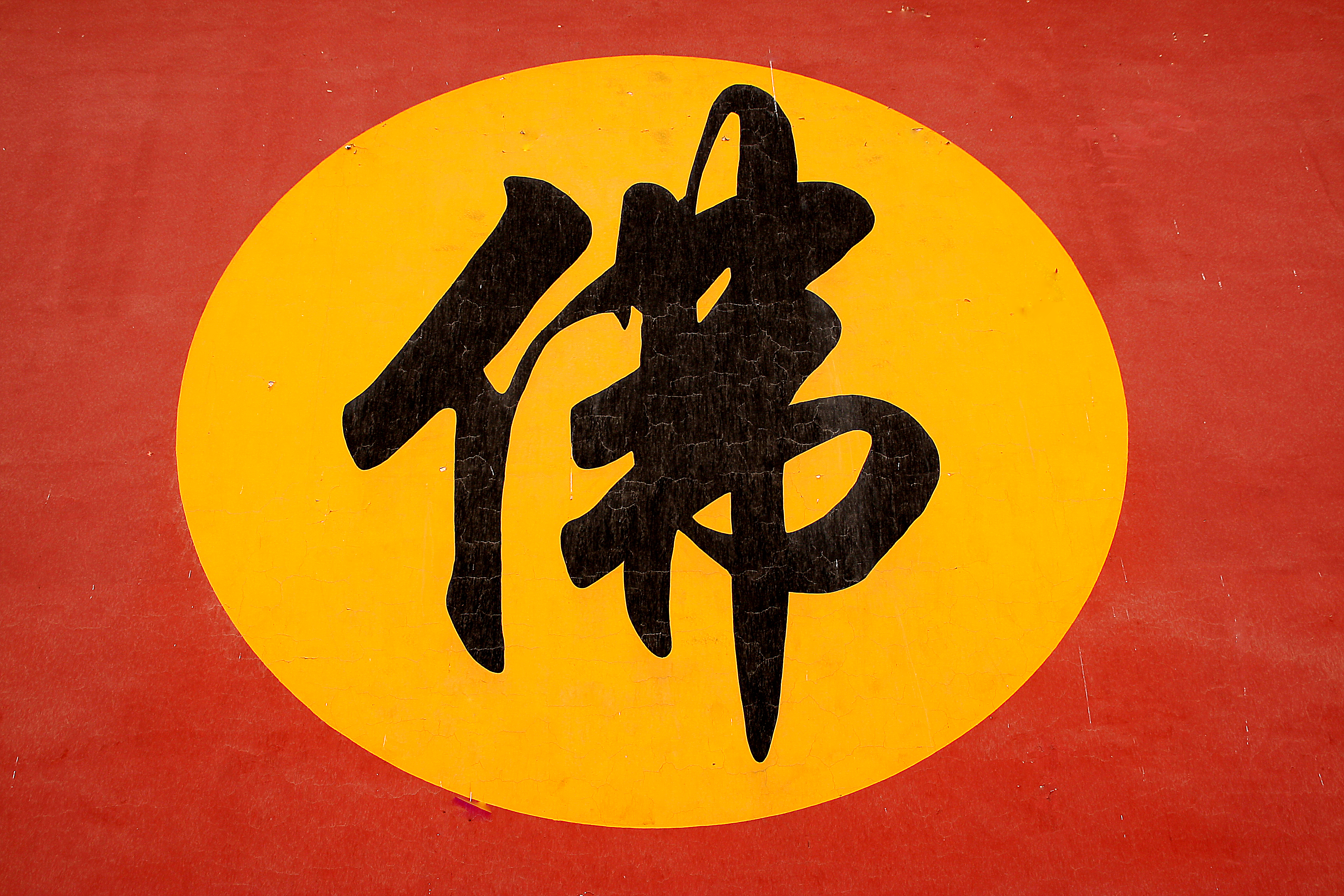|
Zongmi
Guifeng Zongmi () (780–1 February 841) was a Tang dynasty Chinese Buddhist monk and scholar who is considered a patriarch of both the Huayan school and Chan Buddhism. Zongmi wrote a number of works on several Mahayana Sutras, Chan and Huayan, and he also discussed Taoism and Confucianism. His works are a major source for studying the various Chan schools of the Tang. Zongmi was deeply interested in both the practical and doctrinal aspects of Mahayana Buddhism, especially the teachings of the '' Sutra of Perfect Enlightenment'' and the '' Mahayana Awakening of Faith''. Zongmi's work is concerned with harmonizing the various Chan teachings (especially the doctrines of sudden awakening and original enlightenment) with other Chinese Buddhist traditions, especially Huayan, though he also drew on the work of Tiantai Zhiyi in his ritual works. His philosophy attempts to create a comprehensive worldview that includes and sublimates all Buddhist and non-buddhist teachings of his time ... [...More Info...] [...Related Items...] OR: [Wikipedia] [Google] [Baidu] |
Huayan
The Huayan school of Buddhism (, Wade–Giles: ''Hua-Yen,'' "Flower Garland," from the Sanskrit "''Avataṃsaka''") is a Mahayana Buddhist tradition that developed in China during the Tang dynasty (618-907).Yü, Chün-fang (2020). ''Chinese Buddhism: A Thematic History'', p. 160. University of Hawaii Press. The Huayan worldview is based primarily on the '' Buddhāvataṃsaka Sūtra'' ( zh, t=華嚴經, p=Huáyán jīng, ''Flower Garland Sutra'') as well as on the works of Huayan patriarchs, like Zhiyan (602–668), Fazang (643–712), Chengguan (738–839), Zongmi (780–841) and Li Tongxuan (635–730). Another common name for this tradition is the Xianshou school (''Xianshou'' being another name for patriarch Fazang).Hammerstrom, Erik J. (2020). ''The Huayan University network: the teaching and practice of Avataṃsaka Buddhism in twentieth-century China'', chapter 1. Columbia University Press. The Huayan School is known as Hwaeom in Korea, Kegon in Japan and Hoa Nghi ... [...More Info...] [...Related Items...] OR: [Wikipedia] [Google] [Baidu] |
Mazu Daoyi
Mazu Daoyi (709–788) (, Japanese: Baso Dōitsu) was an influential abbot of Chan Buddhism during the Tang dynasty. He is known as the founder of the Hongzhou school of Zen. The earliest recorded use of the term "Chan school" is from his ''Extensive Records''. He is most famously known for his two teaching statements: "This Mind is Buddha" (''jixin shi fo'') and "Ordinary Mind is the Way."Jinhua Jia (2012), ''The Hongzhou School of Chan Buddhism in Eighth- through Tenth-Century China,'' SUNY Press, pp. 67-68. Biography His family name was Ma – Mazu meaning ''Ancestor Ma'' or ''Master Ma''. He was born in 709 northwest of Chengdu in Sichuan. During his years as master, Mazu lived in Jiangxi, from which he took the name "Jiangxi Daoyi". In the '' Transmission of the Lamp'', compiled in 1004, Mazu is described as follows: According to the ''Transmission of the Lamp'', Mazu was a student of Nanyue Huairang (677-744) at Mount Heng in Hunan A story in the entry on Nanyue H ... [...More Info...] [...Related Items...] OR: [Wikipedia] [Google] [Baidu] |
Huineng
Dajian Huineng or Hui-nengThe Sutra of Hui-neng, Grand Master of Zen, with Hui-neng's Commentary on the Diamond Sutra, translated by Thomas Cleary, Shambhala Publications, 1998 (; February 27, 638 – August 28, 713), also commonly known as the Sixth Patriarch or Sixth Ancestor of Chan (traditional Chinese: 禪宗六祖), is a semi-legendary but central figure in the early history of Chinese Chan Buddhism. According to tradition Huineng was an uneducated layman who suddenly attained awakening (Chinese: 見性, jianxing) upon hearing the Diamond Sutra. Despite his lack of formal training, he demonstrated his understanding to the fifth patriarch, Daman Hongren, who then supposedly chose Huineng as his true successor instead of his publicly known selection of Yuquan Shenxiu. Huineng is regarded as the founder of the "Sudden Enlightenment" Southern Chan school of Buddhism, which focuses on an immediate and direct attainment of Buddhist enlightenment. The '' Platform Sutra of th ... [...More Info...] [...Related Items...] OR: [Wikipedia] [Google] [Baidu] |
Chan Buddhism
Chan (; of ), from Sanskrit '' dhyāna'' (meaning " meditation" or "meditative state"), is a Chinese school of Mahāyāna Buddhism. It developed in China from the 6th century CE onwards, becoming especially popular during the Tang and Song dynasties. Chan is the originating tradition of Zen Buddhism (the Japanese pronunciation of the same character, which is the most commonly used English name for the school). Chan Buddhism spread from China south to Vietnam as Thiền and north to Korea as Seon, and, in the 13th century, east to Japan as Japanese Zen. History The historical records required for a complete, accurate account of early Chan history no longer exist. Periodisation The history of Chan in China can be divided into several periods. Zen, as we know it today, is the result of a long history, with many changes and contingent factors. Each period had different types of Zen, some of which remained influential, while others vanished. Andy Ferguson distinguishes thr ... [...More Info...] [...Related Items...] OR: [Wikipedia] [Google] [Baidu] |
Shenhui
Heze Shenhui (Chinese:菏澤神會/菏泽神会; Wade–Giles: Shen-hui; Japanese: Kataku Jinne, 684–758) was a Chinese Buddhist monk of the so-called "Southern School" of Zen, who "claimed to have studied under Huineng." Shenhui is notable for his strident attacks on Yuquan Shenxiu and the associated "Northern School", which was the most prominent branch of Chan Buddhism in China at the time. He accused them of propagating ''gradual teachings'', as opposed to his own ''sudden teachings''. Shenhui's own lineage, called the Heze lineage (菏澤宗), probably died out around the time of the Great Anti-Buddhist Persecution in 845, with Guifeng Zongmi being the only notable monk in the lineage. Biography Shenhui was born in Xiangyang with the surname Gao (高). He learned The Five Classics of Confucius and the philosophy of Laozi and Zhuangzi at a young age. At the age of 14 he became a monk under Huineng, a disciple of Hongren and the founder of the Southern School of Z ... [...More Info...] [...Related Items...] OR: [Wikipedia] [Google] [Baidu] |
Hongaku
The moon reflected in water is a popular simile for enlightenment used by Dōgen in the '' East Asian Buddhist doctrine often translated as "inherent", "innate", "intrinsic" or "original" enlightenment in Buddhism">awakeness. This doctrine holds all sentient beings are already enlightened or awakened in some way. In this view, since all beings have some kind of awakeness as their true nature, the attainment of insight is a process of discovering and recognizing what is already present, not of attaining some goal or developing a potential.Stone, Jacqueline. 'From Buddha Nature to Original Enlightenment: "Contemplating Suchness" in Medieval Japan' in Mathes, Klaus-Dieter, and Casey Kemp, eds. ''Buddha Nature Across Asia''. Wiener Studien zur Tibetologie und Buddhismuskunde 103. Vienna: Arbeitkreis für tibetische und buddhistische Studien, University of Vienna, 2022. As such, people do not have to become Buddhas through religious cultivation, they just have to recognize that they ... [...More Info...] [...Related Items...] OR: [Wikipedia] [Google] [Baidu] |
Subitism
Sudden awakening or Sudden enlightenment (), also known as subitism, is a Buddhist idea which holds that practitioners can achieve an instantaneous insight into ultimate reality (Buddha-nature, or the nature of mind). This awakening is described as being attained "suddenly," "in one glance," "uncovered all together," or "together, completely, simultaneously," in contrast to "successively or being uncovered one after the other." It may be posited as opposite to gradualism, an approach which says that insight can be achieved only through a long gradual step by step process. Etymology The application of the term "subitism" to Buddhism is derived from the French '' illumination subite'' (sudden awakening), contrasting with 'illumination graduelle' (gradual awakening). It gained currency in this use in English from the work of sinologist Paul Demiéville. His 1947 work 'Mirror of the Mind' was widely read in the U.S. It inaugurated a series by him on subitism and gradualism. The Ch ... [...More Info...] [...Related Items...] OR: [Wikipedia] [Google] [Baidu] |
Chengguan (monk)
Qingliang Chengguan (; Korean: Jinggwan; Japanese: Chōgan, 738–839 or 737-838 CE), was an important scholar-monk and patriarch of the Huayan school of Chinese Buddhism also known as Huayan pusa (bodhisattva Avatamsaka) and Qingliang Guoshi (Imperial Preceptor "Clear and Cool", Clear and Cool is a name for Mount Wutai)."Chengguan", in Buswell and Lopez (2013), ''The Princeton Dictionary of Buddhism,'' pp. 179-178. Princeton University Press.Hamar, I"Chengguan" in Silk, J. Brill’s Encyclopedia ''of Buddhism, Volume II: Lives.'' Chengguan is most widely known for his extensive commentaries and sub-commentaries to the ''Avataṃsaka Sūtra'' (''Huayan jing''), as well as for his translation of a new '' Gandhavyuha sutra'' version, together with the Indian monk Prajña. Chengguan's commentaries on the ''Avataṃsaka'' quickly became one of the authoritative sources for Huayan doctrine. Chengguan lived through the reigns of nine emperors and was an honored teacher to seven ... [...More Info...] [...Related Items...] OR: [Wikipedia] [Google] [Baidu] |
Sutra Of Perfect Enlightenment
260px, ''The Complete Enlightenment Sutra'', gold on oak paper The Sutra of Perfect Enlightenment or Complete Enlightenment () is a Mahāyāna Buddhist sūtra highly esteemed by both the Huayan and Zen schools. The earliest records are in Chinese, and it is believed to be of Chinese origin. Divided into twelve chapters as a series of discussions on meditation practice, this text deals with issues such as the meaning and origin of ignorance, sudden and gradual enlightenment, original Buddhahood, etc. these themes were also elucidated in the '' Awakening of Faith''. It was intended to resolve questions regarding doctrine and meditation for the earliest practitioners of the Chan school. The most important commentary is the 9th-century ''Great Exegesis on the Sutra of Complete Enlightenment'' (圓覺經大疏鈔 ''Yuanjuejing Dashuchao'') by Zongmi. Titles Its full Chinese title: (, ). Its reconstructed title in Sanskrit is ''Mahāvaipulya pūrṇabuddha-sūtra prasannārtha ... [...More Info...] [...Related Items...] OR: [Wikipedia] [Google] [Baidu] |
Sichuan
Sichuan is a province in Southwestern China, occupying the Sichuan Basin and Tibetan Plateau—between the Jinsha River to the west, the Daba Mountains to the north, and the Yunnan–Guizhou Plateau to the south. Its capital city is Chengdu, and its population stands at 83 million. Sichuan neighbors Qinghai and Gansu to the north, Shaanxi and Chongqing to the east, Guizhou and Yunnan to the south, and Tibet to the west. During antiquity, Sichuan was home to the kingdoms of Ba and Shu until their incorporation by the Qin. During the Three Kingdoms era (220–280), Liu Bei's state of Shu was based in Sichuan. The area was devastated in the 17th century by Zhang Xianzhong's rebellion and the area's subsequent Manchu conquest, but recovered to become one of China's most productive areas by the 19th century. During World War II, Chongqing served as the temporary capital of the Republic of China, and was heavily bombed. It was one of the last mainland areas captured ... [...More Info...] [...Related Items...] OR: [Wikipedia] [Google] [Baidu] |




